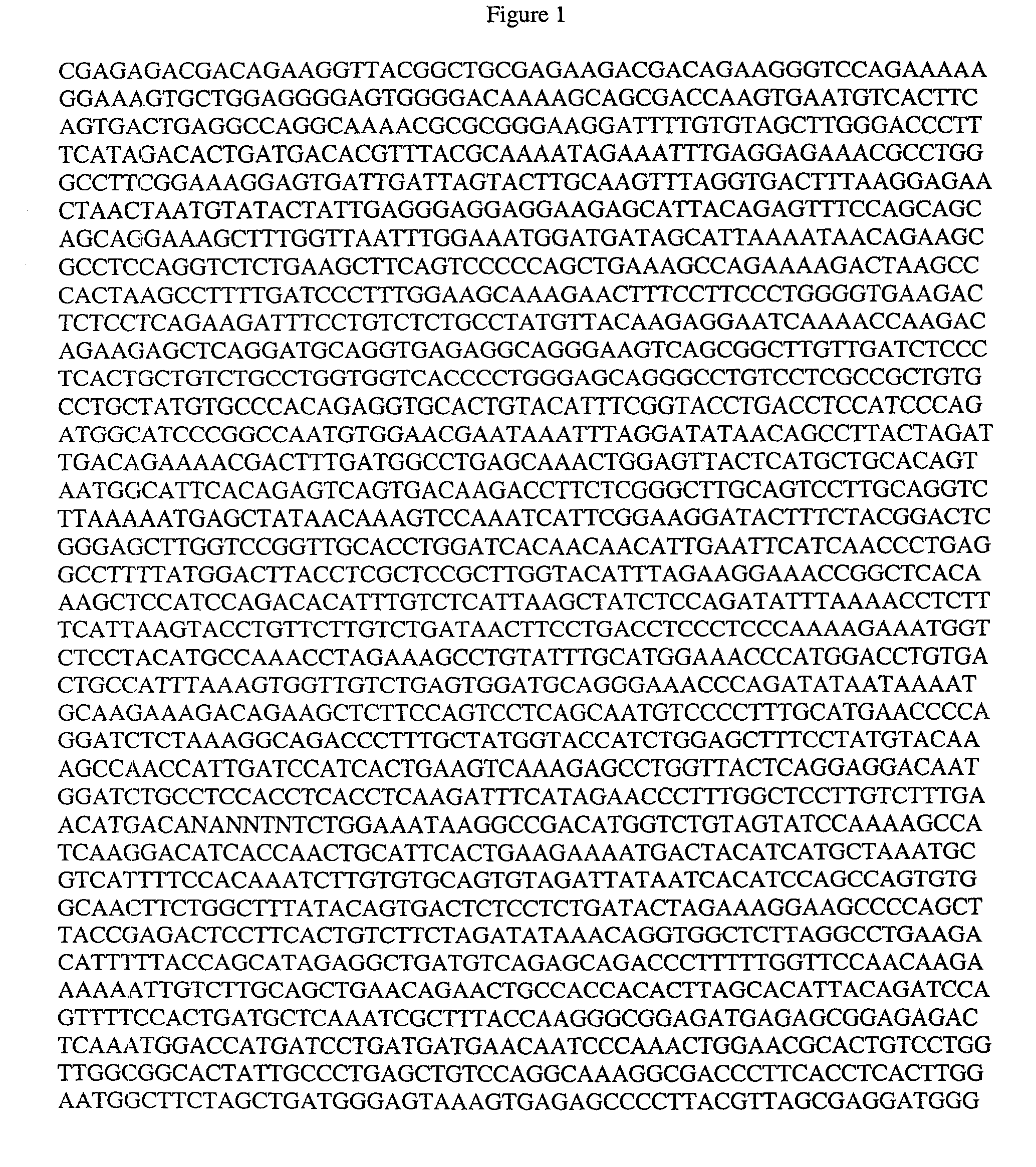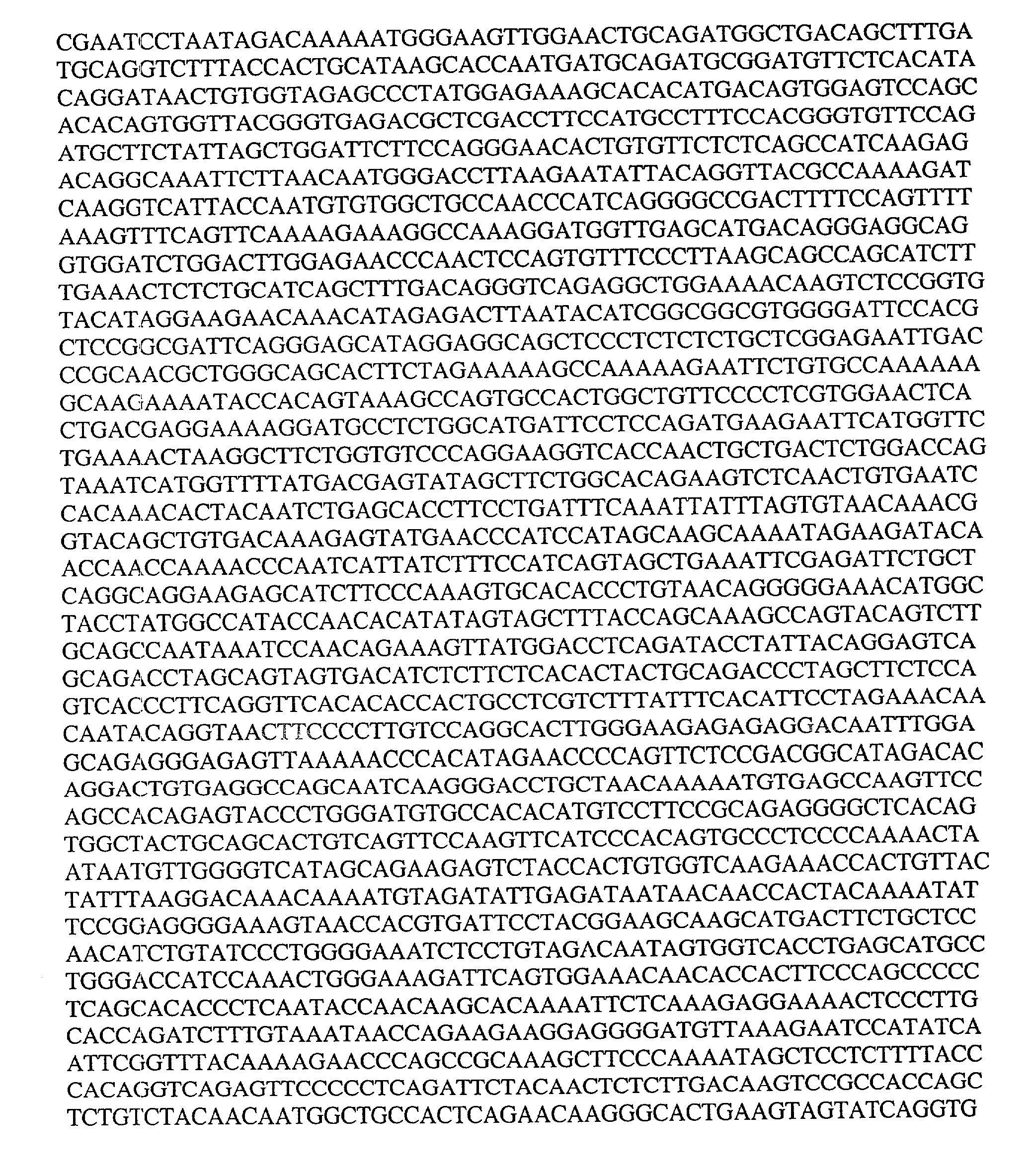Genes associated with mechanical stress, expression products therefrom, and uses thereof
a technology of mechanical stress and genes, applied in the field of mechanical stress induced genes, can solve the problems of osteoporosis, a major health problem, and the actual incidence of the disease is difficult to estimate, so as to improve the proliferation/differentiation of osteoblasts and bone formation
- Summary
- Abstract
- Description
- Claims
- Application Information
AI Technical Summary
Benefits of technology
Problems solved by technology
Method used
Image
Examples
example 1
CMF608 Gene Expression by in Situ Hybridization
[0125] The CMF608 gene expression pattern was studied by in situ hybridization on sections of bones from ovariectomized and sham-operated rats. Female Wistar rats weighing 300-350 g were subjected to ovariectomy under general anesthesia. Control rats were operated on in the same way but ovaries were not excised--sham operation.
[0126] Three weeks after the operation, rats were sacrificed and tibia were excised together with the knee joint. Bones were fixed for three days in 4% paraformaldehyde and then decalcified for four days in a solution containing 5% formic acid and 10% fermalin. Decalcified bones were postfixed in 10% formalin for three days and embedded into paraffin.
[0127] The ectopic bone formation model was employed to study the bone development CMF608 gene expression pattern. Rat bone marrow cells were seeded into cylinders of demineralized bone matrix prepared from rat tibiae. Cylinders were implanted subcutaneously into adul...
example 2
Isolation of Rat OCP
[0137] Primary rat calvaria cells grown on elastic membranes that were stretched for 20 minutes provided a model system for a stimulator of bone formation following mechanical force. Gene expression patterns were compared before and after the application of mechanical force.
[0138] OCP expression was upregulated approximately 3-fold by mechanical force. This was detected both by microarray analysis and by Northern blot analysis using poly (A)+ RNA from rat calvaria cells before and after the mechanical stress. In rat calvaria primary cells and in rat bone extract this gene was expressed as a main RNA species of approximately 8.9 kb and a minor RNA transcript of approximately 9 kb. The hybridization signal was not detected in any other rat RNA from various tissue sources, including testis, colon, intestine, kidney, stomach, thymus, lung, uterus, heart, brain, liver, eye, and lymph node.
[0139] The partial OCP rat cDNA clone (4007 bp long) isolated from a rat calvari...
example 3
Full-length OCP cDNA Construction and Expression
[0143] TNT (transcription--translation) assays were performed according to the manufacturer's instructions (Promega--TNT coupled reticulocyte lysate systems), using specific fragments taken from various regions of the gene. In all assays a clear translation product was observed. FIG. 4. The following fragments were tested:
1 TNT products Frag. Location Fragment size (bp) Translation product size (kD) Promoter 1 134-2147 2013 73 T7 2 3912-5014 1102 40 " 3 574-1513 939 34 "
PUM
| Property | Measurement | Unit |
|---|---|---|
| time | aaaaa | aaaaa |
| time | aaaaa | aaaaa |
| concentration | aaaaa | aaaaa |
Abstract
Description
Claims
Application Information
 Login to View More
Login to View More - R&D
- Intellectual Property
- Life Sciences
- Materials
- Tech Scout
- Unparalleled Data Quality
- Higher Quality Content
- 60% Fewer Hallucinations
Browse by: Latest US Patents, China's latest patents, Technical Efficacy Thesaurus, Application Domain, Technology Topic, Popular Technical Reports.
© 2025 PatSnap. All rights reserved.Legal|Privacy policy|Modern Slavery Act Transparency Statement|Sitemap|About US| Contact US: help@patsnap.com



